Most Americans spend around 90% of their time indoors, which poses a significant risk to building managers, tenants, employees, and businesses because it can impact the comfort, health, and productivity of occupants.
Why Is Indoor Air Quality Important for Office Workers?
Indoor air pollutants are present in most buildings at 2-5 times the levels found outdoors and can cause a variety of health problems, including:
Hay fever
Headaches
Fatigue
Sore throat
Dizziness
These symptoms, known as "sick building syndrome," can result in increased absenteeism, workers' compensation claims, and an overall decrease in productivity.
If the indoor air temperature is too hot or cold, or if overall humidity levels are outside the optimal range, expensive workplace equipment like data servers or office computers are also at risk of damage.
Poor indoor air quality (IAQ) costs the American economy an estimated $168 billion annually, making it one of the most pressing issues facing commercial office buildings today.
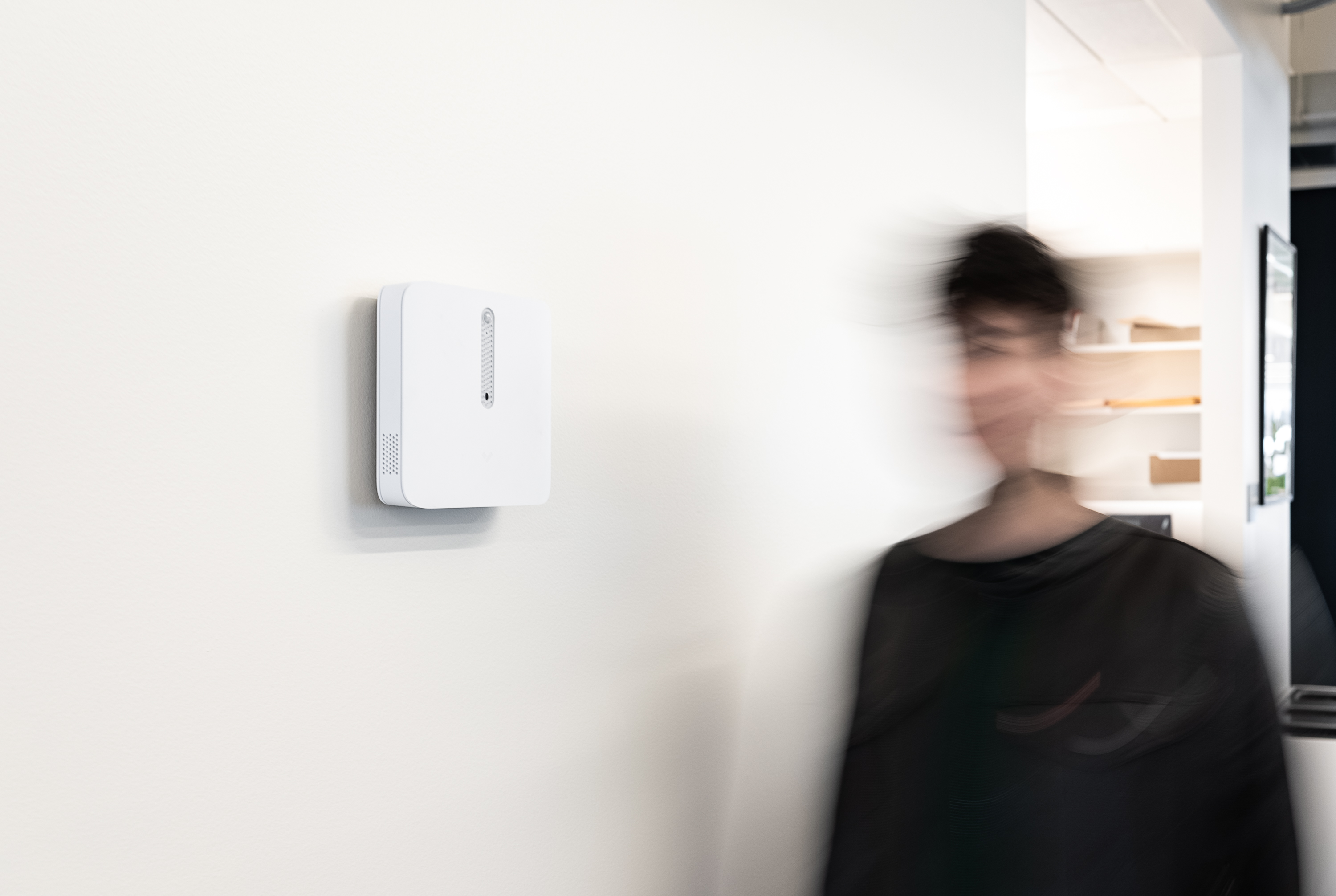
What Are the Sources of Indoor Air Pollution?
Most IAQ problems are caused by a lack of ventilation and fresh air, which allows pollutants to build up to unhealthy levels.
Common sources of indoor air pollution include:
Carbon dioxide (CO2)
Nitrogen dioxide (NO2)
Carbon monoxide (CO) and other combustion products
Volatile organic compounds (VOCs)
Biological contaminants
Particulate matter (PM2.5)
Vaping products and cigarette smoke
Carbon Dioxide
CO2 is a colorless, odorless gas that is produced whenever people exhale or burn fossil fuels.
It is also a by-product of many office activities and equipment, including photocopiers, 3D printers, and computers. Since we breathe out carbon dioxide gas, it is present in all indoor environments, and we are one of the biggest sources of it.
CO2 levels should not exceed 1,000 parts per million (ppm). And while a "dangerous" level of CO2 is much higher—around 40,000 ppm—anything above 700-800 ppm significantly affects cognitive function and decision-making.
Nitrogen Dioxide (NO2)
NO2 is a gas that is produced whenever fuel is burned, such as in car engines, furnaces, and boilers. It is also present in tobacco smoke and some cleaning products.
While NO2 levels are usually low indoors, they can spike during certain activities like cooking in an office breakroom, using a 3D printer, or welding.
NO2 is also an irritant, and long-term exposure can cause respiratory problems like bronchitis. To avoid respiratory issues, the 1-hour NO2 standard should be at the level of 100 parts per billion (ppb), while the average outdoor concentration is 53 ppb.
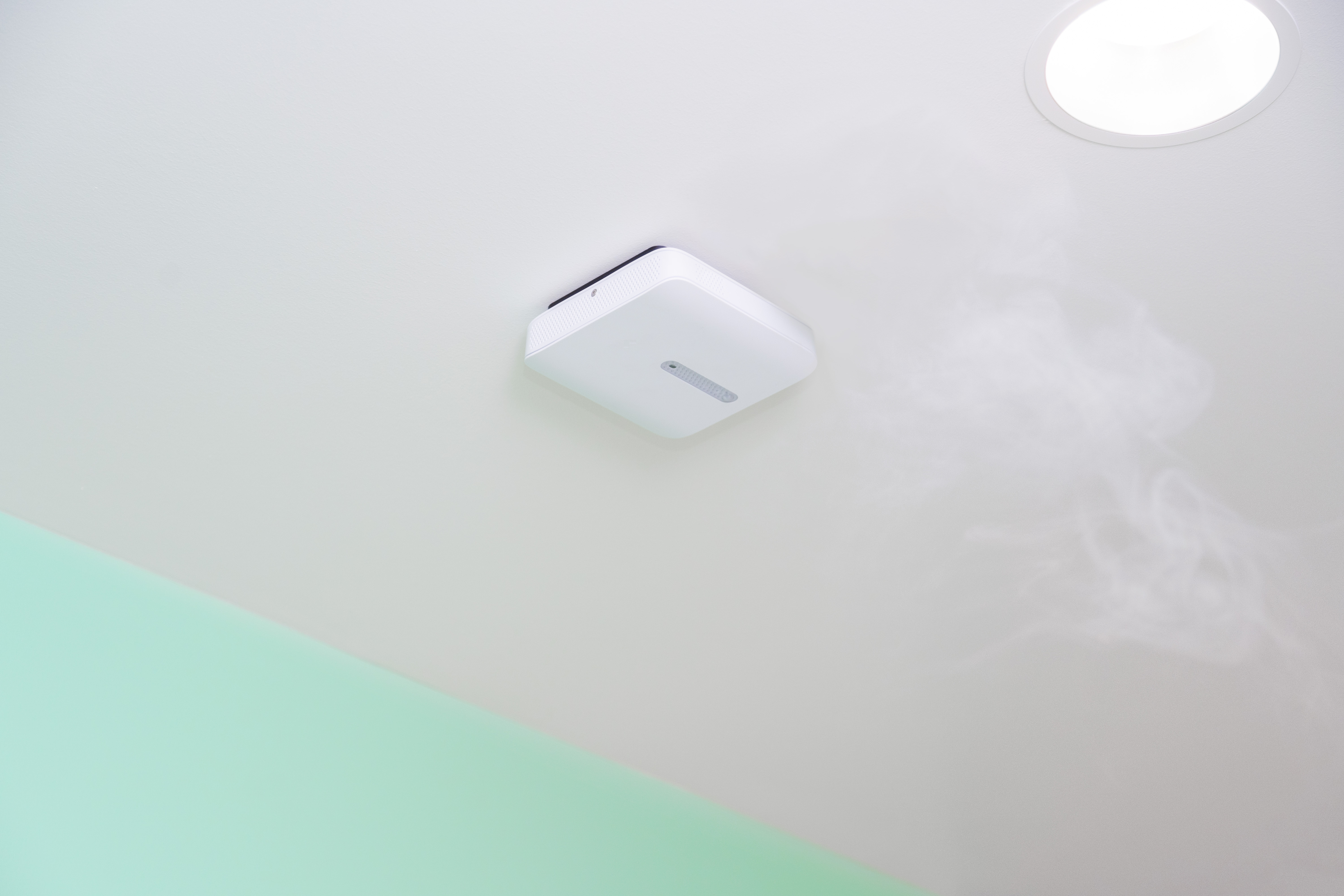
Carbon Monoxide and Other Combustion Products
CO is a colorless, odorless gas that is produced whenever fuel is burned. It can come from car exhaust, tobacco smoke, fires, and gas stoves. This gas is particularly dangerous because it binds to hemoglobin in the blood and prevents it from carrying oxygen to the body's tissues and organs. At high levels, CO poisoning can also be fatal.
9 ppm over an 8-hour period is the maximum safe level of CO in indoor settings. Short-term exposure to higher levels can also be dangerous, and even low levels of CO can cause headaches, dizziness, and nausea.
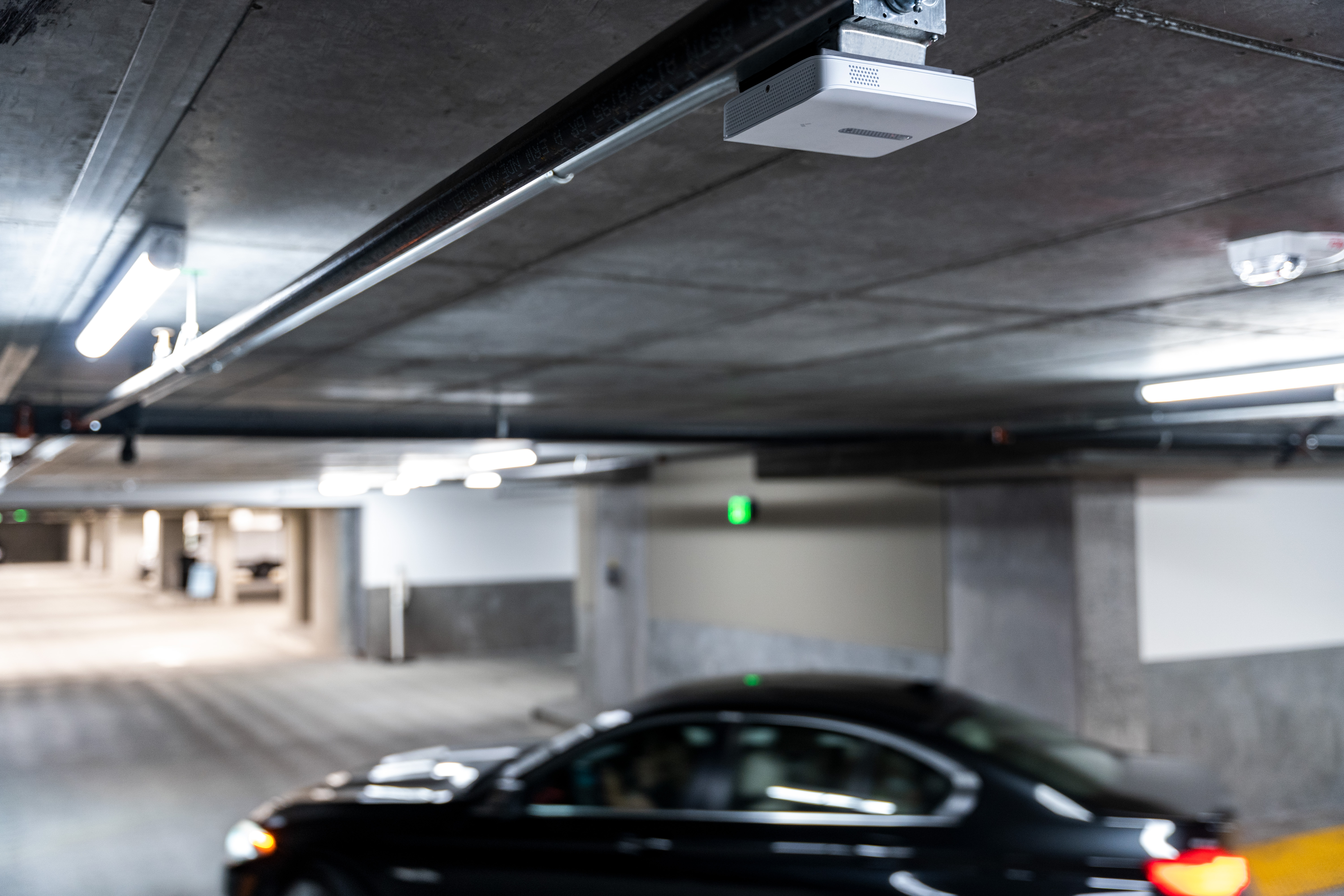
Volatile Organic Compounds (VOCs)
VOCs are chemical pollutants that are released into the air as gases from certain solids or liquids. They are found in a variety of common office products and building materials, including:
Paints
Carpeting
Furniture
Cleaning supplies
Printers and toners
Adhesives
Depending on the type of office and the products being used, VOC levels can vary widely. For example, a new carpet installation can release high levels of VOCs into the air, and an office that uses green cleaning supplies will have lower VOC levels.
While VOCs are not usually harmful at low levels, they can cause eye and respiratory irritation, as well as headaches, dizziness, and nausea. At high levels, some VOCs — like benzene and formaldehyde — are known to cause cancer.
The Occupational Safety and Health Administration's set Permissible Exposure Level for VOCs in the workplace is .75 ppm, with an action level of 0.5 ppm.
Biological Contaminants
Biological contaminants are living organisms that can cause disease, including bacteria, viruses, mold, and mildew. They can enter a building through open doorways, windows, vents, and HVAC systems.
Common sources of biological contaminants include:
People
Animals
Plants
Soil
Household dust
Usually, these contaminants are not harmful. In fact, many of them are essential to our survival, like the bacteria that live in our digestive system. However, some can cause serious illnesses, especially when they are breathed in.
For example, mold and mildew spores can cause allergies and respiratory problems. Bacteria can cause Legionnaires' disease, a severe form of pneumonia. And viruses can cause the flu, the common cold, and other respiratory infections.
To prevent the spread of illness, it is important to keep indoor spaces clean and free of clutter to reduce the level of dust and other potential sources of contamination.
It is also important to maintain a healthy humidity level in the office. Too much moisture can lead to the growth of mold and mildew, while too little can dry out mucous membranes and make them more susceptible to infection.
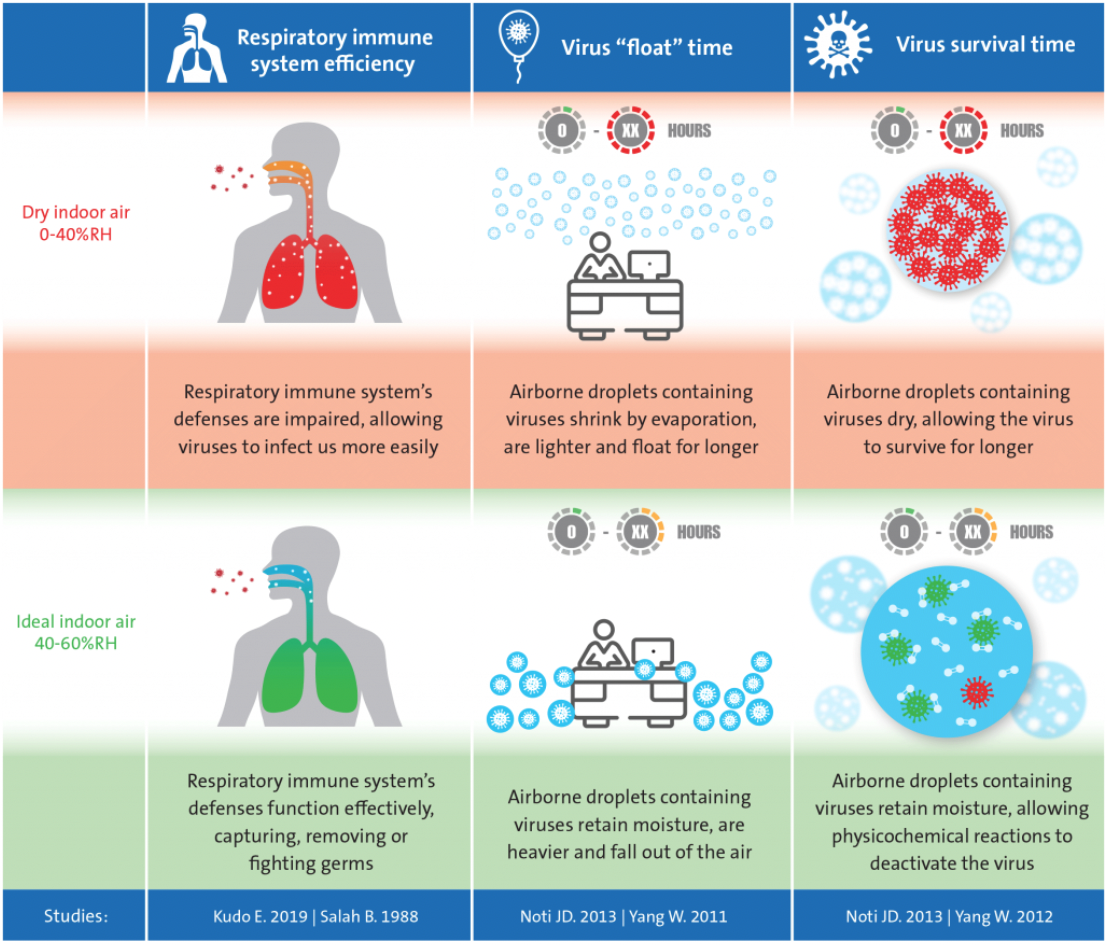
The ideal indoor humidity level is between 40% and 45%. Anything under 30% is considered "too low," and anything above 60% is considered "too high."
Particulate Matter (PM2.5 and PM10)
PM2.5 is small particulate matter—less than 2.5 micrometers in diameter—that floats around in the air and can be breathed in. PM10 is larger particulate matter—between 2.5 and 10 micrometers in diameter—that can also be breathed in but is not as small as PM2.5. Both of these types of particulate matter are made up of metals, combustion particles, organic compounds, and other materials.
Outdoors, fine particulate matter comes from car exhaust, construction activity, and wildfires. Indoors, it can come from cooking, cleaning with chemicals, using a wood-burning fireplace, and smoking cigarettes.
Each office space will have its own high-risk areas for particulate matter. For example, an office connected to a parking garage might have higher levels of PM2.5 near the doorways that lead to the garage.

Particulate matter can cause numerous respiratory problems, including asthma attacks, bronchitis, and difficulty breathing. It can also worsen existing medical conditions like heart disease and diabetes.
any levels of PM2.5 below 12 micrograms per cubic meter (µg/m3) are considered "safe." At levels of 35 µg/m3, particulate matter is considered highly unsafe. Long-term exposure to levels as low as 2.5 µg/m3 has been linked to health problems, so the lower, the better.
Vaping Products and Cigarette Smoke
Most workplaces don't allow cigarette smoking indoors, but some employees may use vaping products, like e-cigarettes and vape pens. These devices heat a liquid—usually containing nicotine, flavoring, and other chemicals—to create an aerosol that the user inhales.

Vaping is not risk-free. The long-term health effects of using vaping products are not yet known, but they are likely to be similar to the effects of smoking cigarettes. These include an increased risk of lung cancer, COPD, and other respiratory problems.
Even if a workplace doesn't allow smoking, cigarette smoke can still enter the building through vents, open doorways, and windows. This "secondhand" smoke is just as harmful as smoke that is directly inhaled.
In general, it's best to avoid any exposure to tobacco smoke, whether it's firsthand or secondhand.
Other Sources of Poor Indoor Air Quality In Office Buildings
The other two sources of poor indoor air quality don't revolve around pollution—temperature and humidity pose risks to more than just employee health, failure to monitor them can lead to equipment damage as well.
Temperature
The ideal temperature for office buildings is between 60°F and 76°F. Of course, this range may not be comfortable for everyone, so it's important to have a way to adjust the temperature to meet the needs of the individual employees.
If the temperature is too low, or too high, it can lead to headaches, drowsiness, and difficulty concentrating. In extreme cases, it can lead to hypothermia or heat stroke.
Equipment is also sensitive to temperature changes. Computers, in particular, need to be kept within a certain range to function properly. If the temperature gets too high, computers can overheat and break down.
Humidity
The ideal relative humidity for an office environment is between 40% and 45%. If the air is too dry, it can cause static electricity, drying out mucous membranes, and exacerbating respiratory problems. If the air is too humid, it can encourage the growth of mold and dust mites—both of which can cause respiratory problems.
High humidity can also damage equipment. Computers, for example, can be damaged by condensation—the buildup of water vapor on cold surfaces. And if an office holds terabytes worth of on-premises data, high levels of humidity compromise the security of that data.
Standards for Maintaining Indoor Air Quality
The American Society of Heating, Refrigerating, and Air Conditioning Engineers (ASHRAE) has created guidelines for property owners, building managers, and office workers to follow to ensure that indoor air quality is up to par. (here)
Maintenance and Operation of Building Ventilation Systems
Your building's air quality largely depends on how well the ventilation system is maintained and operated.
HVAC systems include:
All the equipment used to ventilate, heat, and cool a building
The ductwork that distributes conditioned air throughout the building
The filters that clean the air
The controls that regulate the system
HVAC systems play a major role in how pollutants are moved and eliminated. In some situations, they can also be the reason for pollution, like when ventilation air filters get filled with dirt or moisture builds up and causes mold to grow. Because of HVAC systems' importance, it's crucial that building and office managers pay attention to the following factors.
Ventilation System Design
HVAC systems consider the projected number of people and equipment in a building to determine air delivery capacity. If areas in the building are used for different purposes than intended, the HVAC system may need to be adjusted. For example, a storage area that's been turned into an office will need more ventilation than the system was designed for.
To find out if your building's HVAC system is sized correctly, have an energy audit performed. Many electric and gas utilities offer this service for free or at a reduced cost.
Outside Air Supply
The amount of available fresh air outside an office building can have a significant impact on indoor air quality.
If there's too much smog, pollen, or other pollutants in the air, they'll be brought into the building along with the fresh air. The best way to avoid this is to use a HEPA filter, which can remove up to 99.97% of contaminants from outside air.

Another way to reduce the amount of pollutants coming into a building is to use an economizer, which is a device that controls the flow of fresh air. By only allowing fresh air in when the outside air quality is good, you can minimize the amount of pollutants entering the building.
Space Planning and Office Layout
The way a building is laid out can have a big impact on air quality. For example, if cubicles are too close together, there may not be enough ventilation. And if there's no place for storage, office workers may end up storing materials in hallways, blocking vents and causing poor air circulation.
If the HVAC system fails to distribute air evenly throughout the building, some areas may be too hot or too cold, causing employee discomfort and decreased productivity.
Similarly, office equipment like computer monitors and printers can give off heat, which can trick an HVAC system into producing too much cold air if it is too close to it.

Equipment Maintenance
Diligent maintenance of HVAC equipment is essential to preventing indoor air pollution. All parts of the system should be regularly inspected and cleaned, and filters should be replaced on a regular basis.
If an office building has a rooftop air conditioner, the coils should be cleaned at least once a year to prevent them from getting clogged with dirt and debris. And the condensate drain should be checked monthly to ensure it's not clogged and causing water to back up and overflow.
Inspections of HVAC equipment can be performed by the building manager or a professional service.
Control Over Other Pollutant Areas
Hallways, stairwells, parking garages, and elevators are all areas where pollutants can accumulate. And as office workers move in and out of these areas, they can track pollutants into the office, where they can be circulated by the HVAC system.
To prevent this, building and office managers should have a plan in place for regularly cleaning these areas. For example, carpets in hallways and stairwells should be vacuumed on a regular basis, and trash should be emptied often to prevent it from building up.
For more serious pollutants (e.g., car exhaust, cigarette smoke, etc.), special filters may be required in high-risk areas of the office.
Indoor Air Quality Is a Shared Responsibility
HVAC design impacts indoor air quality, but so does building management. For example, if the HVAC system isn't well-maintained or enough outside air isn't brought into the building, poor IAQ will be the result.
Several things that affect indoor air quality are out of our control, such as the materials used in renovations or the products and furnishings brought into the building by occupants. Some factors, however—like cleanliness and general housekeeping—require both building management and individual employee cooperation.
Therefore, we all share responsibility for keeping indoor air quality healthy.
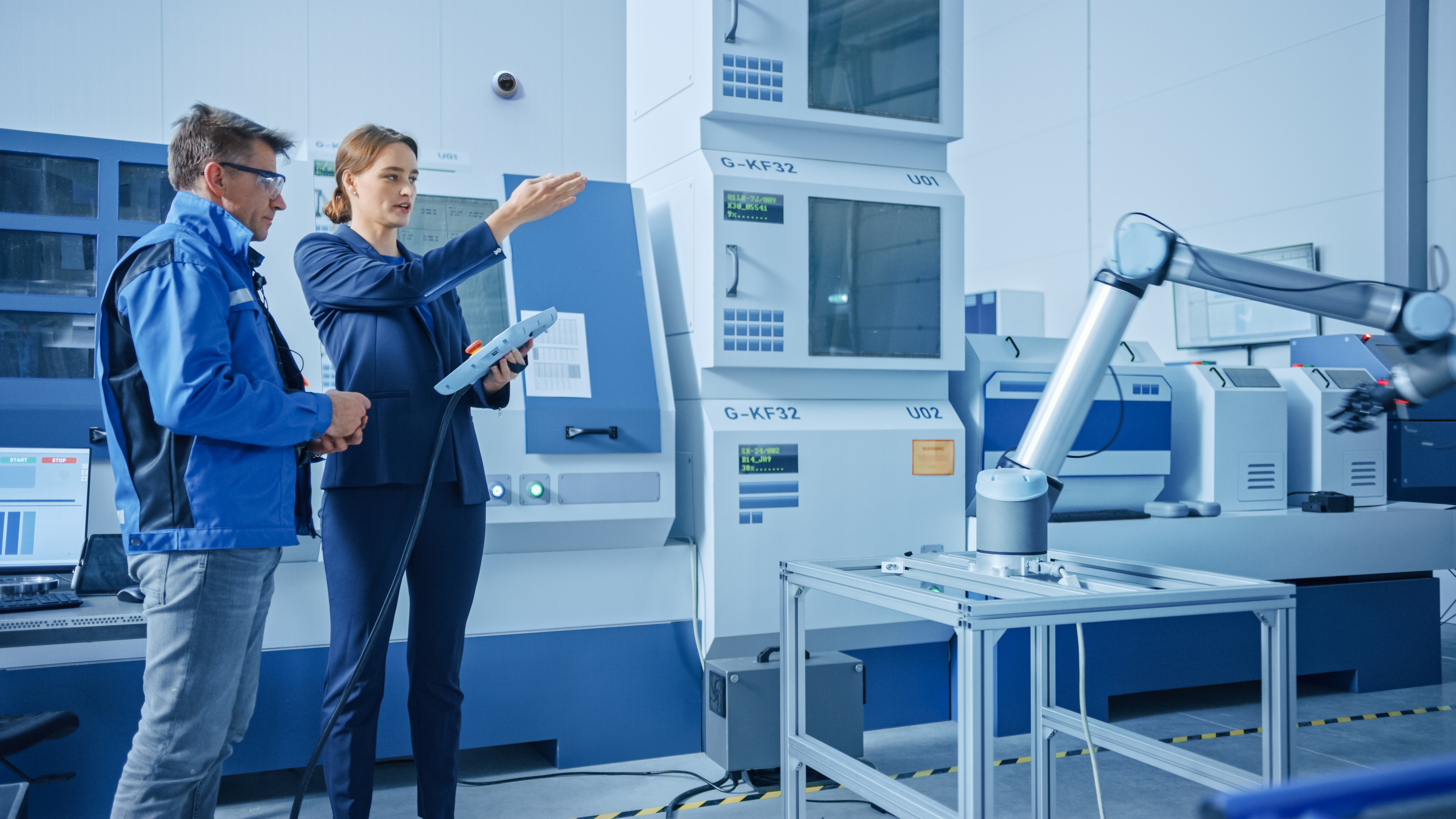
Things Everyone Can Do to Improve Indoor Air Quality
Employees, office managers, and facility managers can all do a few things to prevent and reduce indoor air contaminants.
Do not block air vents and grills. When supply vents are blocked, air can't circulate properly, and when return vents are blocked, indoor air can't be filtered and recirculated.
Regularly clean your workspace. Dust, mold, and pollen can all accumulate on surfaces like desks, cabinets, bookshelves, and picture frames. These contaminants can then become airborne and cause health problems.
Comply with the office building smoking policy. Cigarette smoke can seep into offices through doorways, windows, and ventilation systems.
Use office products that have the least impact on indoor air quality. For example, choose photocopiers and printers that use toner rather than ink, and buy cleaning products that are labeled "low-emitting."
Report any water leaks or standing water to the office manager or building engineer immediately. Water leaks can lead to the growth of mold and mildew, which can cause health problems.
Keep houseplants in your office. Plants help remove pollutants from the air, and they also add humidity, which can help prevent dry eyes, nosebleeds, and static electricity.
Use an air purifier. Air purifiers can remove many of the contaminants in indoor air, including dust, mold spores, pollen, and pet dander.
Report any health or IAQ risks to management. And if you have questions about how to improve IAQ in your office, ask the building engineer or office manager.

Things Office Managers Can Do to Improve Indoor Air Quality
Office managers play a key role in ensuring that their office has good indoor air quality. In addition to the things that all employees can do to improve IAQ, office managers can also take some specific actions.
Ensure that the office ventilation system is operating properly and that filters are regularly replaced. This includes the HVAC system, as well as any portable air cleaners that are in use.
Regularly clean common areas, such as the break room, kitchen, bathrooms, and copy room. These areas can be breeding grounds for bacteria and other contaminants.
Restrict smoking to designated outdoor areas only. Cigarette smoke can travel through ventilation systems and into other parts of the building, so a strict no-smoking policy is critical to indoor air quality management.
Inform employees about office IAQ policies and procedures. Employees should know how to report any IAQ problems, as well as what they can do to help improve indoor air quality.
Ensure that all office equipment is properly maintained. This includes copy machines, printers, and any other devices that emit airborne contaminants.
Keep indoor air quality in mind when making purchasing decisions. Everything from cleaning chemicals to office furniture can impact IAQ, so make sure you are buying products that will not make the problem worse. Research the designers, manufacturers, and suppliers of the products you are considering to make sure they have a good track record when it comes to IAQ.
Work with contractors and building management before conducting remodels or construction projects. These activities can release a lot of contaminants into the air, so it's important to have a plan in place to minimize the impact on indoor air quality.
Use an indoor air quality monitor. Monitoring indoor air contaminants is nearly impossible without the use of specialized equipment. IAQ monitors like the Verkada SV20 series Environmental Sensors play a pivotal role in identifying problem areas so you can take corrective action.
Indoor Air Quality Monitoring With Verkada
Verkada's suite of software and hardware products is designed to work together to provide comprehensive coverage of your office space.
Verkada Environmental Sensors Verkada's air quality sensors continuously monitor for a wide range of indoor air contaminants, including carbon dioxide, volatile organic compounds, temperature, and humidity using a collection of eight sensor readings. The sensors also have a built-in air quality index that gives you a real-time snapshot of the air quality in your office.
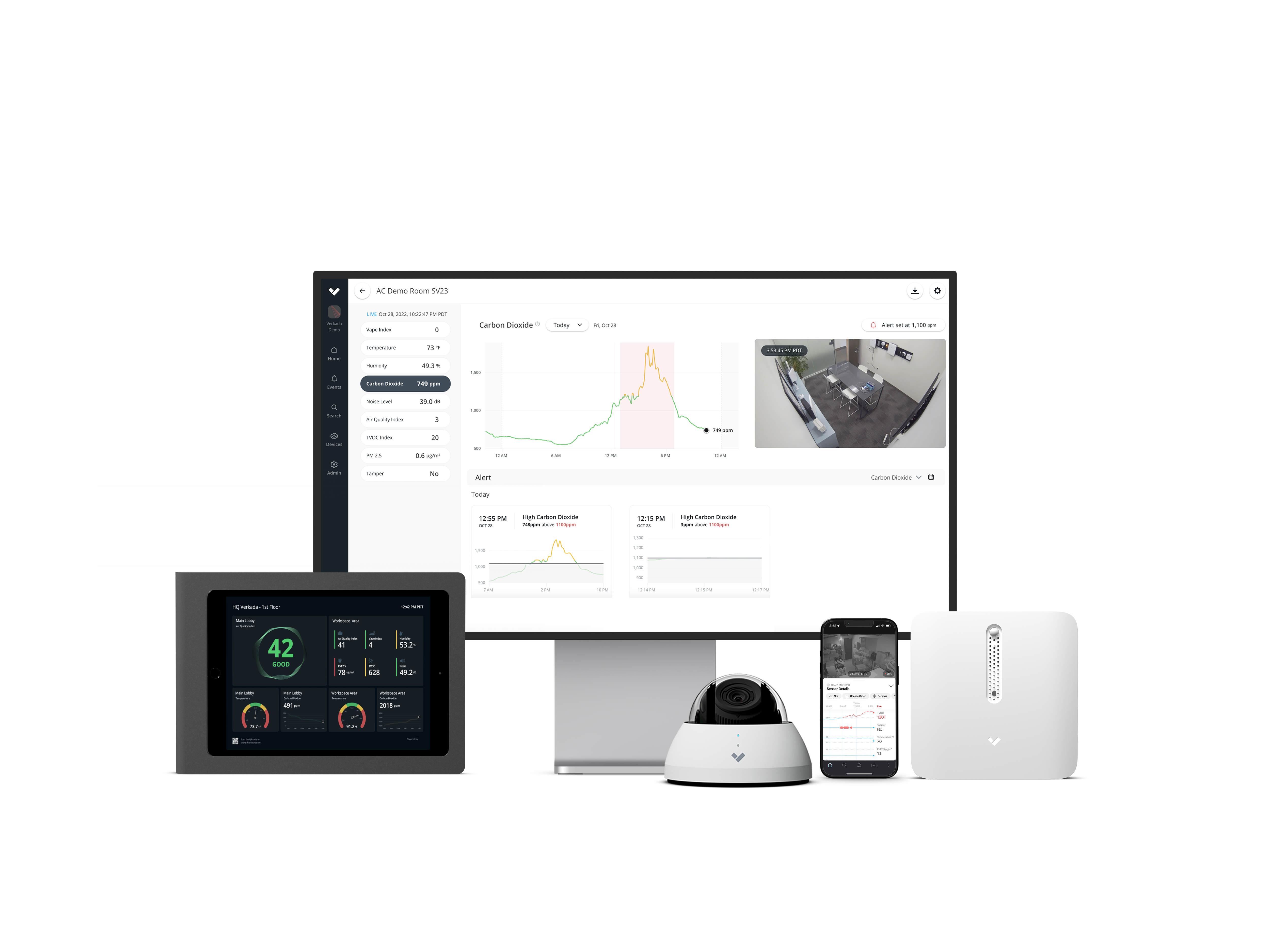
Explore how you can improve health, safety, and environmental quality across your organization. Join an upcoming webinar, request a free trial sensor, or email [email protected] for a live demo.


